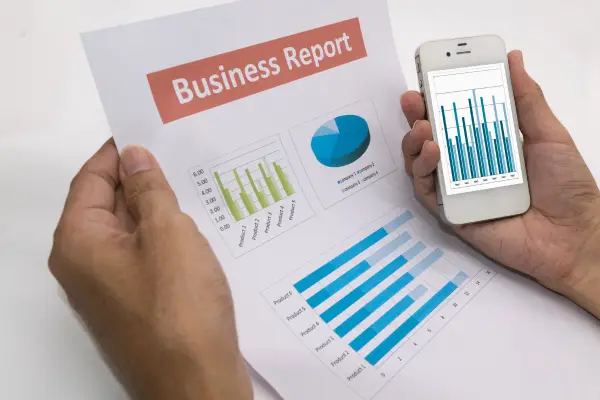Anoto, the creator of digital pen and paper technology, today announced the results of a study undertaken by Joshua Greenbaum, principal of Enterprise Applications Consulting on the use of paper in business. The study found that despite the growing number of organisations turning to tablets and other mobile solutions to capture information, many are not decreasing their reliance on paper-based processes. In fact, Greenbaum uncovered a vast amount of data that indicates requirements for paper are growing, not shrinking, including the following:
• According to the Statistical Abstract of the United States, {{printing and writing paper production has actually increased over the last 30 years}}, from 16 million tons per year to more than 32 million tons.
• Meanwhile, the global printer market is expected to grow at a compound annual growth rate of 4.5 per cent through 2015, according to research firm Technavio.
• Research firm IDC reports printer output reached 3.1 trillion pages in 2010.
• The document capture market – which includes scanning and other technologies for digitising paper – continues to grow at an average rate of five to seven per cent, according to research by Harvey Spencer Associates.
Paper continues to be used in many applications, whether it is in a doctor’s office, annotating a blueprint at a strategic construction site, or filling out a maintenance form in a rail yard. The fact remains that the intersection of paper and business processes – such as patient on-boarding and insurance compliance, collaborative engineering and design, or risk management and regulatory compliance – is not slated to disappear any time soon. Moreover, it seems to be expanding.
“As enterprises’ understanding of the possibilities and limits of tablets and smartphones grow, it is clear that other approaches to solving the problem of capturing paper-based data are not only worth exploring, but can add significant value to existing enterprise processes,” said Joshua Greenbaum, principal, Enterprise Applications Consulting. “Digital pen and paper technology is an ideal option because it turns pen and paper into a digital information device, making the case for digital pen and paper technology in the enterprise compelling.”
Turning Paper into an Efficient Compliance Tool:
Digital pen and paper technology is very secure and is ideal for compliance-heavy industries, because it can authenticate handwritten information and better control its provenance and use. Each individual piece of smart paper or smart form has unique identifiers in the microdot patterns that make that paper document truly unique. Likewise, the digital pen that captures the pen strokes on a piece of smart paper also has a unique ID, which means that it is possible to identify which individuals made which pen strokes – a signature, for example – on which precise piece of paper. This traceability can significantly aid in any forensic discovery or audit processes.
“As long as people are the interface, paper remains a key component in many business processes, particularly those that pre-date the PC and tablet,” said Stein Revelsby, CEO of Anoto. “Digital pen and paper technology is ideal because it is secure, rugged and can optimise processes without requiring significant reworking of the workflow or retraining of the users.”
According to Greenbaum’s research, digital pen and paper technology offers many benefits including:
• User-Friendly. It is as easy to use as a regular pen and paper. Just replace the existing pen with a digital pen and familiar handwritten documents and forms can become part of a permanent, fully-digitised, record.
• Collaborative. There are many instances where digital pen and paper technology is ideal. For example, a group of architects marking up a blueprint at a construction site, or a doctor taking a medical history without having a PC or tablet that might normally get in the way of the patient/doctor interaction.
• Rugged. Many business processes require capturing information under less-than-ideal circumstances where a PC or tablet may not be the best solution. This may be in challenging environments, where extremes of heat and cold require gloves and other equipment that impede the use of keyboard and touch screens, but where a digital pen solution works very well.
• Keeps Users “on Task.” The use of digital pen and paper technology places an intrinsic limit on what a user can do in the course of completing a specific task. A general purpose device such as a PC, tablet or phone, provides a potentially large number of distractions and diversions for users, who may be tempted to use the device for a purpose unrelated to the specific task or process at hand. The close link between the user and the digital pen means the only interaction a user can have with the device is dictated by what is on the piece of paper.
• Easy to Integrate With Existing Business Processes. The ability of digital pen and paper technology to capture the pen strokes of a user and digitise them lends itself readily to the use of this technology inside an existing business process that is already dependent on the use of a paper-based form. Therefore, digital pen and paper technology can be used for pre-existing workflows and business processes, and can be integrated into the development of new business processes.
About Anoto Group
Anoto Group is the company behind and world leading in the unique technology for digital pen and paper, which enables fast and reliable transmission of handwritten text into a digital format. Anoto operates through a global partner network that focuses on user-friendly solutions for efficient capture, transmission and storage of data within different business segments, e.g. healthcare, bank and finance, transport and logistics and education. The Anoto Group has around 110 employees and is headquartered in Lund (Sweden). The company also has offices in Guildford and Wetherby (UK), Boston (US) and Tokyo (Japan). The Anoto share is traded on the Small Cap list of NASDAQ OMX Stockholm under the ticker ANOT. For more information: www.anoto.com.
To access the full report please visit: http://usmarketing.anoto.com/rs/anoto/images/Anoto_White_Pap…


